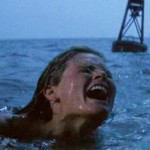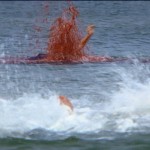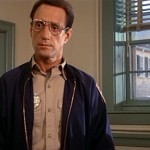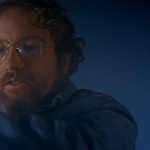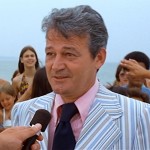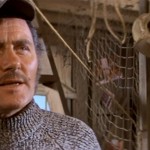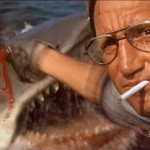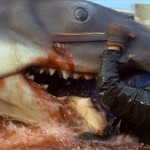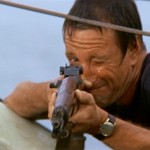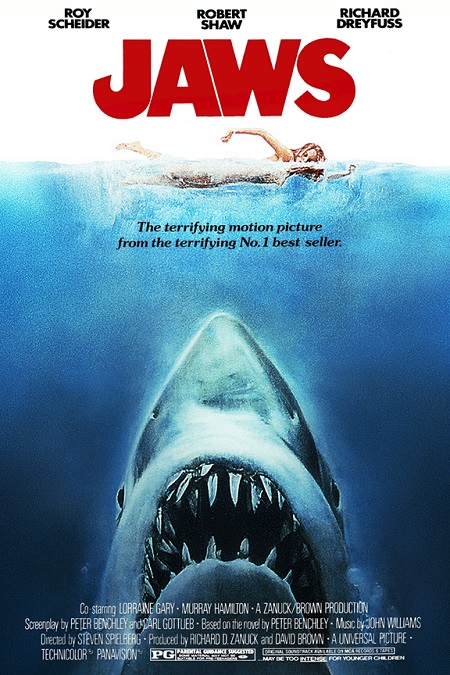
Jaws – 1975
Ok, it is difficult to decide where to begin with one of the biggest blockbusters of all time. I know, it is nowhere near being the biggest, but it is up there. And as such, there are so many things I’d like to say about it. First and foremost, I need to call this movie a suspense thriller. It’s a monster movie done right. And it is the most effective kind of monster movie there is, because the monster, a giant-sized great white shark, could very easily be real.
According to the film’s director, Stephen Spielberg, the star of the film is really the shark. Its costars, Roy Scheider, Richard Dreyfuss, and Robert Shaw, each did a great job, but they all had to take a back seat to Jaws. One story after another is told about how the mechanical shark caused such serious problems during filming that it nearly shut down the production. But really, it is what we have all come to see. Even though we know the shark, at times, looked pretty fake, we love believing that it is real.
The film is about the shark as it terrorizes the waters of the fictional town, Amity Island, in New England. The town depends on tourism and Mayor Vaughn, played by Murray Hamilton, refuses to close the beaches, stubbornly claiming that the monster poses no threat to anyone’s safety. Scheider plays Police Chief Brody. He is constantly trying to get the Mayor to close the beaches. Enthusiastic young oceanographer, Matt Hooper, played by Dreyfuss, arrives to assess the situation.
Eventually, after one too many bloody deaths, the beaches are closed, and professional shark hunter Sam Quint, played by Shaw, is hired to kill the beast. Chief Brody, Hooper, and Quint go to sea on a wooden boat called the Orca to do battle with the leviathan. The first half of the movie is all set-up for the hunt. Until then, we have barely seen the shark, which many say, and I agree, is part of the film’s genius. I think that it is human nature to be the most scared of what we cannot see. That is what makes that opening scene so frightening!
The shark’s first victim is a young woman who is swimming naked in the moonlight. Actress Susan Blacklinie played Chrissie Watkins. Anyone who has seen that opening sequence will understand just how scary it really is. We can only see and hear what is above the water. We see her terrified face, hear her quick, short breaths, see her get dunked as Jaws begins to devour her. Then, as he grabs her and begins thrashing her around in the water, her blood-curdling screams for help are like a knife to the heart of the viewers. And then the sudden, ominous silence, as he pulls her under for the last time, is enough to make anyone afraid to get into the bathtub.
But despite the film’s suspense-thriller tone, there are plenty of dramatic moments, and even light-hearted scenes which do a wonderful job of humanizing the characters and making us afraid for them as they face the monster shark. The scene where the mother of a dead child, eaten by Jaws, publicly accuses Chief Brody of allowing the beaches to stay open when he knew that there was a dangerous shark in the water is poignant and well played. Quint’s unexpected and dramatic little speech about how he was one of 1,100 men who were stranded in the ocean during WWII, was one of the best scenes in the movie. He told of how they were attacked by sharks and he was one of the 316 survivors.
Spielberg has been quoted as saying that the movie wouldn’t have been half as good as it was if it were not for the incredible soundtrack by his friend, composer, John Williams. Just hearing those two simple notes is enough to strike fear in the heart. The music has become synonymous with more than just shark attacks, but with unseen danger, in general. John Williams is known for writing some of the most memorable movie themes in history, and Jaws was, according to the composer, the one that really jumpstarted his career.
If I had any complaints about the film, it would be a mild one concerning the ending. The ending was changed from the original book for a very understandable reason. Jaws still died, but in the source material, it was just from extensive wounding. For a film, it would have been a bit anticlimactic. Spielberg wanted an exciting and visually stunning ending. Well, he certainly got that. He placed an oxygen tank in the shark’s mouth which Chief Brody shot with a rifle. The tank exploded, blowing up the beast in a shower of blood and shredded shark parts!
Ok, let’s take a quick look at this. Could it work? Maybe, but unlikely for the simple reason that when the tank was put into the shark’s mouth, one of two things would probably have happened: Either the giant shark would have swallowed the tank down its gullet, thus making it impossible for Brody to shoot it, or it would have ejected the tank, rendering it useless as a means of killing the shark. It probably would not have kept it in its mouth like a toothpick in the mouth of a gangster. Oh, who am I kidding? It was an awesome and exciting ending, and I loved it!
